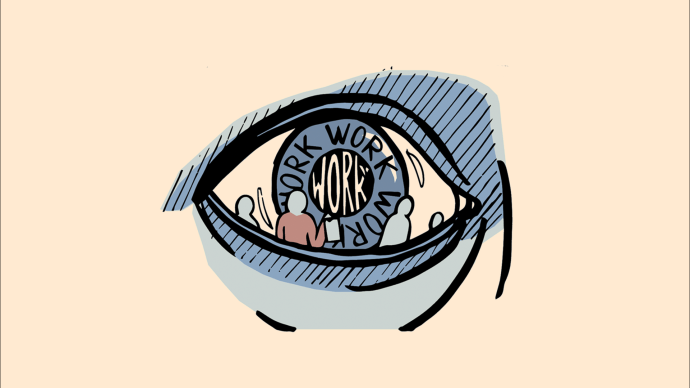The Same But Different
A set of workshop resources to use with people who teach or welcome first year students
Introduction
Since 2016, colleagues at Manchester Metropolitan University have carried out a series of small-scale projects to explore the transition to higher education for students with diverse previous experiences.
We have used the project data to develop The Same but Different resources which can be used with staff who teach or welcome first years, as well as by student representatives. They aim to help participants to put themselves in the shoes of a first year student, to empathise with the range of different experiences students may have had before arrival and to consider ways to ease transition with these experiences in mind. The resources provide workshop activities such as quotations and fictitious scenarios for discussion, role plays and quotations. Building on the institution-specific research, we have further developed the work in a project with colleagues from the University of Cape Town which focuses more specifically on students who are the first in their families to experience higher education.
The resources have been adapted to be less institution-specific and are freely available to download using a Creative Commons license.

That first year is awful, it doesn’t matter who you are, do you know what I mean? If you can keep your head above water in the first year that’s great, but I think it’s sometimes harder for people who’ve got no idea what’s meant to happen
The Same but Different Resource Pack

Project Background and Findings
-
Project Background
Interviews were carried out with staff and students from across all faculties at Manchester Metropolitan. Staff with varying levels of experience in higher education were interviewed.
Some staff had a keen interest in making the transition to higher education smoother. For example, an experienced member of staff was using data collected by the university on students’ backgrounds and mapping this data up with progression in order to see if there are links between a student’s background and whether they progress. The staff who had less experience were not so focused on making transitions smoother as they were getting to grips with teaching. Other staff interviewed were clearly experts in their subject areas, but struggled to work out why students may not show up for seminars and how to make them feel welcome.
-
What Has Been Found So Far?
The findings from this project so far have shown strong consistency with the literature on transition, with the same issues in transition identified by Tinto (1987) and Yorke (1999).
Some staff thought that icebreakers were the solution to making friends at university; when others thought this was the worst possible start. All staff were trying different pedagogical practice with first years such as breaking down content early in the course, or having formative assessments within the first month. This was successful as it gave students confidence with assessments later in the year. The reason for this was to get students using resources such as the library early and to see what level they are at. There was an emphasis on early contact with personal tutors and pre-induction.
There were a number of aspects first year students did not anticipate when deciding to come to university, such as the anxieties living independently brought up, from partying too hard, to learning how to cook and using a washing machine, or budgeting for the first time. This correlates with the findings of Hamshire et al (2013) who worked with healthcare students. There were also unexpected scenarios, including the loneliness encountered when students started living on their own in halls. A key observation and finding to highlight was how frequently staff talked about the growing frequency of mental ill-health of students and how institutions should be doing more to help. Manchester Met is increasing counselling provision in the next academic year.
Confidence or more importantly, how to build students’ confidence, was brought up repeatedly. Confidence acquired throughout first year comes with gaining autonomy (Briggs, Clark et al. 2012). Staff mentioned the lack of confidence students possess and how to build resilience. Cotton et al. (2017) suggest that the time for students to develop resilience is transition. The main critique of resilience is to not place too much emphasis on the student and their success or failure. This was backed up by students interviewed who had mentioned how shy and apprehensive they had been when starting in first year. Staff mentioned they thought students had their confidence knocked out of them through the compulsory education system, and trying to rebuild that confidence and creativity took time.
-
References
Briggs, A. R. J., et al. (2012). “Building bridges: understanding student transition to university.” Quality in Higher Education 18(1): 3-21. http://dx.doi.org/10.1080/13538322.2011.614468
Cotton, D. R., et al. (2017). “Supporting the retention of non-traditional students in Higher Education using a resilience framework.” European Educational Research Journal 16(1): 62-79.
Hamshire, C., et al. (2013). “Should I stay or should I go? A study exploring why healthcare students consider leaving their programme.” Nurse education today 33(8): 889–895.
Tinto, V. (1987). Leaving college: Rethinking the causes and cures of student attrition, University of Chicago Press.
Yorke, M. (2000). “Smoothing the transition into higher education: What can be learned from student non-completion.” Journal of Institutional research 9(1): 35-47.
I know from my students that I’ve taught in the past, it is very specific, caught in the middle, not quite being understood by the family but not quite being understood by the peers, it’s that kind of caught between two cultures which is a very specific position
